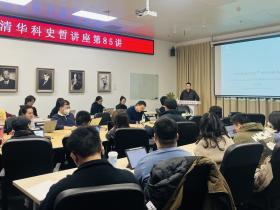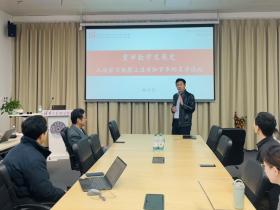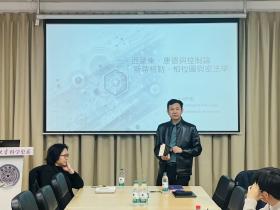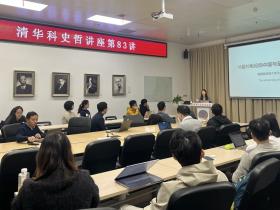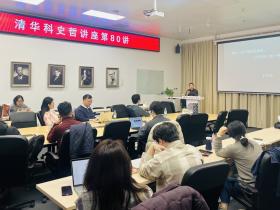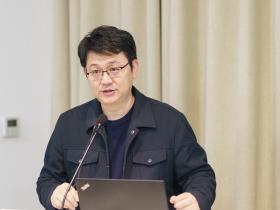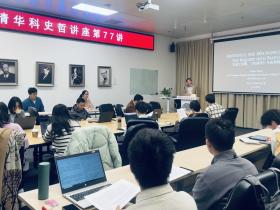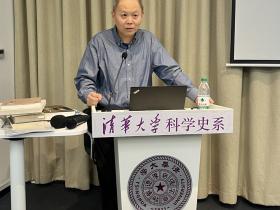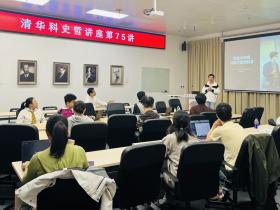On November 8, 2024, Tsinghua University’s Department of the History of Science hosted the 78th session of the THU History and Philosophy of Science Lecture Series in Room 124 of the Humanities Building. Chaired by Professor Wang Wei, the lecture featured Pierrick Bourrat, Senior Lecturer at Macquarie University, Australia, who spoke on "A physical interpretation of drift in a deterministic setup."
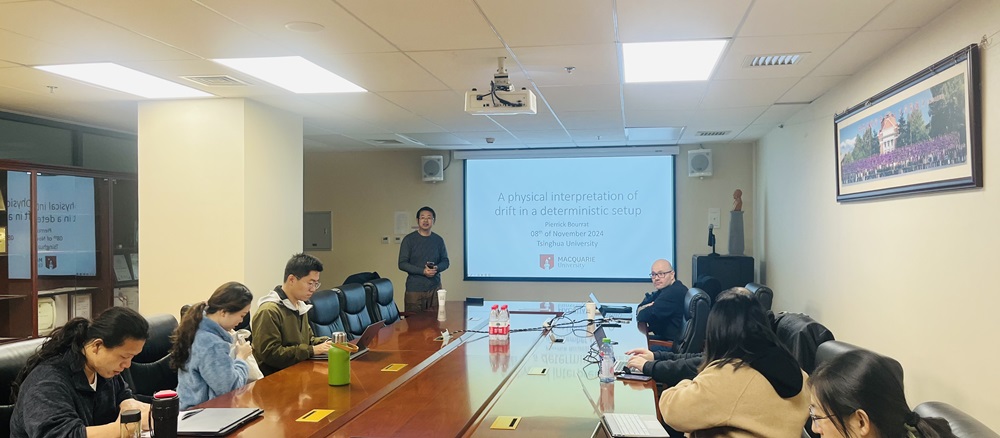
Professor Wang Wei introduced Pierrick Bourrat to the students. Dr. Bourrat earned his Ph.D. at the University of Sydney and currently serves as a Senior Lecturer at Macquarie University and Director of the Theoretical and Methodological Foundations of Biological Science Group. He is a leading figure in the philosophy of biology in Australia.

Dr. Bourrat began the lecture by noting that drift and natural selection are two important causes or forces shaping evolutionary change. The former is seen as a process of evolutionary change due to chance or accident, while the latter is seen as evolutionary change occurring because some individuals in a population have advantages over others. From a statistical perspective, drift can be described as the deviation of actual evolutionary change from expected evolutionary change. Bourrat posed the question: How can we provide a causal mechanism for drift that generates a probability distribution?
The first proposal is the propensity interpretation of fitness. Bourrat rejected this approach. Propensity itself is an ambiguous concept; the least problematic single-case propensity requires introducing simple indeterministic facts (e.g., quantum facts) into biological evolution. However, much drift occurs in deterministic causal processes, and such ontological expansion does not yield sufficient benefits.
The second proposal is Peter Godfrey-Smith’s interpretation attributing drift to intrinsic properties and extrinsic properties. Bourrat largely accepted and refined this approach. When differences in an organism’s intrinsic properties—such as genes, mitochondria, or organs—cause variation in reproductive output, this process is termed natural selection. When differences in extrinsic properties—such as population size, habitat distribution, or catastrophic events—cause variation in reproductive output, this process is termed drift. First, Bourrat argued that Godfrey-Smith overlooked the diachronic aspect of intrinsic properties, failing to distinguish between intrinsic invariable properties and intrinsic variable properties. Second, Bourrat contended that Godfrey-Smith erroneously introduced the concept of continuity C in explaining drift. Godfrey-Smith suggested that C characterizes the smoothness of the adaptive landscape: if a population’s C value is low, minor changes in intrinsic or extrinsic properties lead to large changes in reproductive output, implying such evolutionary change relates to drift. Bourrat argued that the C concept merely modulates the level of reproductive output differences caused by variations in intrinsic or extrinsic properties but does not fundamentally alter the nature of processes occurring in the population. Finally, Bourrat added that the C concept helps understand mechanisms by which natural selection produces complex adaptations. An excessively low C value indicates a rugged adaptive landscape, preventing populations from smoothly reaching peaks. Thus, even with natural selection, this selection lacks directionality, making significant patterns undetectable.
The third proposal is Bourrat’s natural-range interpretation. Drawing on frameworks by Rosenthal et al., he argued that evolutionary change processes can be viewed as a deterministic setting where every step is determined. However, the system’s initial conditions—its inputs—can be deterministic or indeterministic, known or unknown. The randomness of "drift" can be described by the unpredictability of single-output results given a non-trivial range of initial conditions; the determinacy of "drift" can be described by the constancy of the proportion of initial conditions leading to a result across the initial condition space. Yet Bourrat noted that some extrinsic properties affect reproductive output deterministically rather than probabilistically; in such cases, drift does not satisfy the unpredictability criterion for single outputs.
Pierrick Bourrat summarized his conclusions: (1) proposing an alternative physical interpretation of drift distinct from the classical propensity interpretation of fitness; (2) ensuring compatibility with determinism; (3) linking it to the natural-range interpretation of probability; (4) consistently emphasizing the importance of the environment (extrinsic properties) when considering drift. Crucially, classical population genetics models—relied upon by most biologists discussing drift—typically do not involve the environment.
During the Q&A session, faculty and students engaged in vigorous discussion on: (1) epistemological vs. ontological levels of randomness; (2) mismatch between biological evolution and environmental change; (3) boundaries between organisms and their environment; (4) distinctions between intrinsic and extrinsic properties; (5) physical vs. functional properties; (6) determinism and indeterminism.
Documented by: Lu Fengfeng
Reviewed by: Wang Wei


